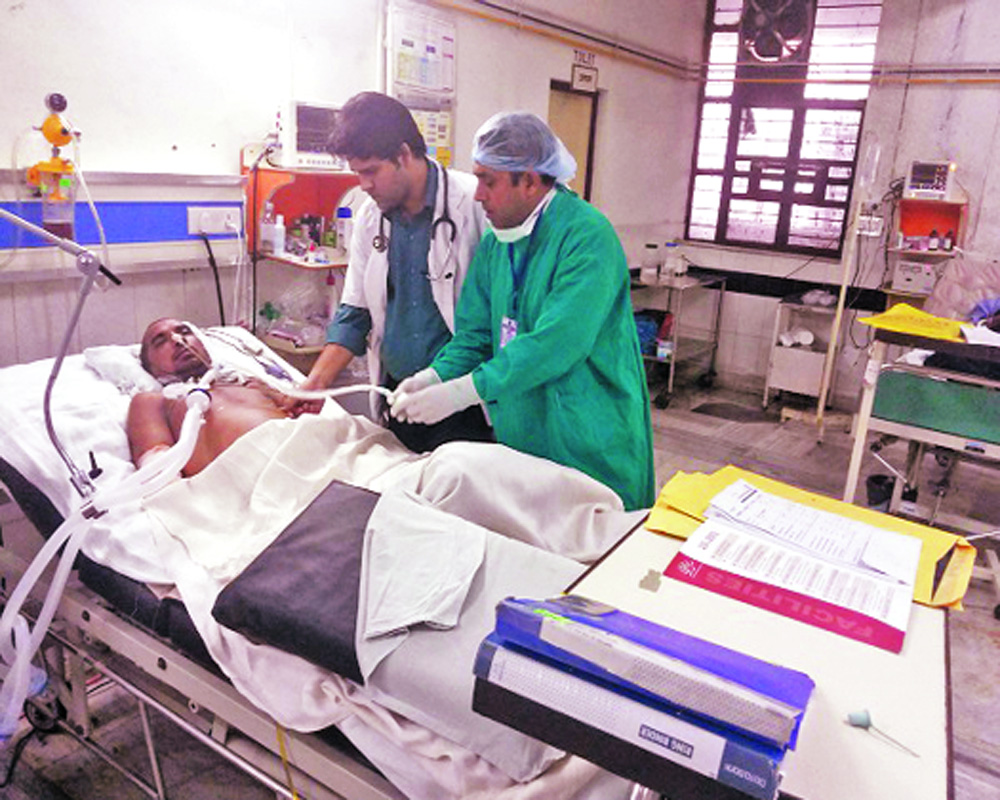Investments in advanced medical technology and government initiatives like Ayushman Bharat are making healthcare more accessible in tier II and III cities
Healthcare facilities in tier-II and III cities have long struggled with the disparity between affordability and accessibility of quality healthcare services. These cities often lack well-equipped medical centres, forcing patients to travel to nearby metropolitan areas for advanced treatment. The shortage of trained medical professionals further exacerbates the problem.
The doctor-to-patient ratio in these cities remains significantly below the WHO-recommended standard of 1:1000, often reaching alarming ratios such as 1:25,000.@The Accessibility GapOne of the major factors behind this situation is the concentration of healthcare resources in metropolitan areas. Government hospitals in smaller cities often grapple with overcrowding, long waiting lines, and outdated infrastructure. Meanwhile, private hospitals that offer advanced treatments are often unaffordable for the majority of the population. This leaves patients with limited options, pushing them to seek care in distant metro cities.
However, in recent years, several hospitals in tier-II cities have made significant strides in bridging this gap. The emergence of well-equipped hospitals outside major metropolitan areas is proving to be a game-changer for patients who previously had to travel long distances for treatment. Health Institutions like Subharti Hospital in Meerut exemplify how tier-II cities are evolving to provide comprehensive and affordable healthcare not only under the Ayushman Bharat Mission but also for uninsured patients, reducing dependence on metropolitan hospitals.
Ayushman Bharat and Affordability
One of the biggest challenges in tier-II and III cities is making advanced healthcare both available and affordable.
Many private hospitals offer high-end treatment facilities, but their pricing structures make them inaccessible to a significant portion of the population.
To address this issue, some hospitals are designing cost-effective treatment models that prioritize patient affordability without compromising on quality. Additionally, government schemes and insurance programs such as Ayushman Bharat-PMJAY need to be further expanded and better implemented in these regions. Many eligible patients are unaware of their entitlements under schemes like PMJAY, leading to underutilization of available resources. Increased awareness and streamlined implementation of such initiatives can make a significant difference in ensuring financial accessibility to quality healthcare.
Advancements in Medical Technology
Traditionally, hospitals in non-metro areas have been perceived as lacking advanced infrastructure and specialized treatment options. However, this perception is gradually changing.
Many healthcare institutions such as Subharti Hospital in Meerut are now investing in cutting-edge medical technology, including advanced imaging facilities such as digital PET scans, high-resolution MRI and CT scans, and modern oncology treatment options like chemotherapy and radiation therapy. The availability of these services locally is significantly reducing the burden on patients who would otherwise have to commute to larger cities.
A breakthrough in Meerut is the introduction of comprehensive treatment centres, particularly in fields like oncology. Cancer patients, for example, often face logistical and financial challenges when forced to visit different hospitals for diagnosis, surgery, chemotherapy, and radiation therapy.
The integration of these services under one roof in tier-II cities is improving patient outcomes and reducing treatment delays. Subharti Hospital, for instance, has emerged as a reliable healthcare provider in Western Uttar Pradesh, offering a full spectrum of oncology services in a single location, saving patients valuable time and resources.
The Road Ahead
Ensuring quality healthcare in tier-II and III cities requires a multi-pronged approach that includes expanding medical infrastructure, ensuring equitable resource distribution, increasing investment in medical education to address the shortage of trained professionals, and encouraging partnerships to enhance healthcare accessibility. As healthcare in India evolves, tier-II and III cities are poised to play a crucial role in expanding medical access beyond metropolitan areas.
Continuous efforts are needed to overcome existing challenges and create a healthcare system that is truly inclusive and accessible to all. With a focused approach towards affordability, accessibility, and technological advancements, the future of healthcare in non-metro regions holds immense potential. By addressing these challenges head-on, tier-II and III cities can become the next frontier in India’s healthcare transformation.
(The writer is the Deputy Medical Superintendent of Subharti Hospital, Meerut. Views expressed are personal)
























